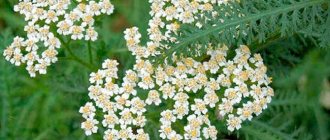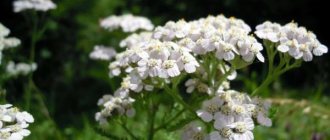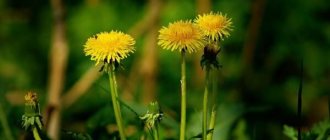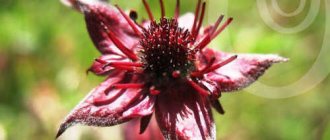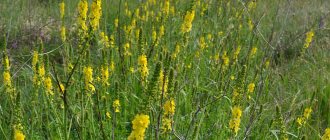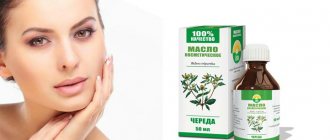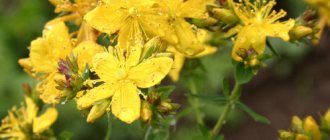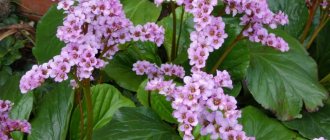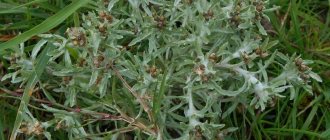Photo pixabay.com
I love calendula for its bright flowers, unpretentiousness, spicy aroma and unique healing properties. My grandmother always found a place for calendula both in the flower garden and in the vegetable garden. And every year I sow it on my plot.
Calendula is often called the flower of the sun or the bride of summer, as its orange flowers turn to follow the sun. The Latin name comes from the word “pharmacy”. Due to the peculiar shape of the seeds, calendula is popularly called marigold.
An ancient legend about the origin of this name has been preserved in Russian folklore. It tells that a boy was born into one poor family. He grew up sick and weak, so they called him not by his name, but simply by Zamorysh. When the boy grew up, he learned the secrets of medicinal plants and learned to use them to heal people. Sick people began to come to Zamorysh from all the surrounding villages. However, there was an evil man who was jealous of the doctor’s fame and decided to kill him. One day on a holiday he brought Zamorysh a cup of wine with poison. He drank, and when he felt that he was dying, he called people and bequeathed that after his death, the marigold from his left hand would be buried under the poisoner’s window. They fulfilled his request. A medicinal plant with golden flowers grew in that place. In memory of the good doctor, people called this flower marigold.
Decoctions and infusions of calendula have astringent, antispasmodic, choleretic and soothing properties.
Collection No. 2
Dry crushed calendula flowers, chamomile flowers, yarrow, mint leaves and lemon balm are mixed in equal proportions. One tablespoon of the collection is poured into two glasses of boiling water, simmered over low heat for ten minutes, cooled, filtered and boiling water is added to the original volume of liquid. Take one glass of decoction in the morning and evening half an hour before meals. The course of treatment is ten days.
Photo eruditochka.ru
Application in cosmetology
Solving cosmetic problems is another aspect of using the miraculous power of calendula. The rich chemical composition of the plant allows you to rejuvenate your facial skin and improve the health of your hair.
In addition to the fact that calendula products effectively eliminate facial skin defects such as rashes and irritation, the use of plant extract has a tonic, regenerating and whitening effect.
Therefore, calendula is indicated for all types of facial skin as a basis for the following products:
- tonic and tone enhancing;
- rejuvenating;
- eliminating freckles, age spots, scars and scars;
- improving the color of the epidermis;
- relieving inflammation;
- triggering cell regeneration;
- reducing the depth and number of wrinkles;
- reducing fat levels;
- healing minor scratches and wounds.
To eliminate skin problems, it is recommended to wipe your face daily with an infusion of calendula flowers or make masks based on a tincture of inflorescences.
And to restore hair health, eliminate fragility, prevent hair loss or accelerate growth, it is enough to periodically rinse it with a decoction of marigolds.
Atherosclerosis
Calendula cleanses blood vessels well and helps prevent atherosclerosis and its complications. Take 1/2 cup of flax seeds and pour cold water for half an hour. Then the water is drained, the seeds are poured with two glasses of boiling water, left for two hours and filtered. Prepare an infusion of calendula in a separate bowl. To do this, pour one glass of calendula flowers with two glasses of boiling water, leave for two hours and filter. Mix both infusions and leave overnight. Take three tablespoons of infusion twice a day: in the morning on an empty stomach and before bed. The course of treatment is three weeks.
Pharmacological value of marigolds
Calendula flowers have the most pronounced healing power.
Flower baskets contain a huge amount of the following substances:
- Carotenoids are organic natural pigments that neutralize the effects of free radicals. Provitamins A, the precursors of vitamin A, are considered especially valuable representatives of the class.
- Flavonoids are plant organic compounds that have antispasmodic, healing, choleretic and diuretic effects.
- Triterpenoids are acid-containing organic compounds that provide anti-inflammatory effects, improve the conduction of nerve impulses and reduce cholesterol.
- Sterols are organic substances, derivatives of steroids that neutralize the effect of cholesterol and reduce its level in the blood.
- Essential oils that suppress the activity of pathogenic microorganisms.
- Salicylic acid is a compound with pronounced antiseptic, analgesic, antirheumatic and anti-inflammatory properties.
- Coumarins are substances whose pharmacological activity is expressed in antispasmodic, antitumor and anticoagulant effects.
In addition, marigold inflorescences are rich in microelements such as:
- potassium and magnesium, which support the functioning of the heart muscle;
- iron and calcium, necessary for normal hematopoiesis;
- zinc, which strengthens the immune system;
- copper to relieve inflammatory processes;
- molybdenum, which prevents demineralization of tooth enamel;
- as well as selenium, which prevents the formation of atypical cells.
The stems and leaves of calendula contain phytoncides, thanks to which the plant can be used as an antibacterial agent, and tannins. And marigold seeds are used to obtain fatty oils.
Pressure
Calendula can both increase and decrease blood pressure. To lower blood pressure and relieve nervous tension, pour four tablespoons of dry crushed calendula flowers, one tablespoon of black currant leaves, two tablespoons of strawberry leaves into one glass of boiling water, leave for half an hour and filter. Take 1/2 cup four to five times a day half an hour before meals. To increase blood pressure, take two tablespoons of dried calendula flowers, 1/2 cup of alcohol and one medium-sized lemon with a thin peel. Calendula flowers are poured with alcohol, left in a dark place for two days, filtered and lemon juice is added. Take 10 drops, dissolving them in water three times a day until the condition improves.
Calendula for children
Rare herbs can be used for children; calendula is an exception. However, until the child is two years old, it can only be used as a decoction for external use. Bathing with calendula decoction will help relieve skin rashes (heat rash, diathesis), eliminate redness, diaper rash and itchy skin. Getting rid of these ailments will help calm the nervous system and make the baby calmer and improve his sleep. In consultation with a pediatrician and with his permission, calendula can be used for a disease such as rickets, which develops when there is insufficient vitamin D in the body, and also as a disinfectant, anti-allergic, anti-inflammatory, and skin regenerating agent.
Beautiful calendula flowers are used not only for medicinal purposes; in culinary processes, its bright petals are added to vegetable and fruit salads, soups and even when making homemade baked goods. Dishes prepared with calendula acquire a special colorful color, stimulate appetite and improve mood.
We draw your attention to the fact that it is advisable to eliminate any problem at three levels: physical, energetic and spiritual. The recipes contained in the article are not a guarantee of recovery. The information provided should be considered as capable of helping based on the experience of traditional and modern medicine, the multifaceted action of herbal remedies, but not as a guarantee.
Prostatitis
Collection No. 1
Take in equal proportions dry crushed calendula flowers, capitula grass, knotweed, toadflax, shepherd's purse, elecampane rhizome, and bergenia and grind them into powder. One teaspoon of powder is poured into one glass of boiling water, simmered over low heat for five minutes, left for two hours and filtered. Take half a glass of decoction four times a day after meals. The course of treatment is ten days. After the same break, the treatment is repeated.
Collection No. 2
Mix one tablespoon of dry crushed calendula flowers, one tablespoon of horsetail herb, one teaspoon of nettle leaves, one teaspoon of peppermint leaves, and one teaspoon of elecampane roots. One tablespoon of the collection is poured with one glass of boiling water, left for three hours and filtered. Take 1/3 cup three times a day half an hour before meals. The infusion is very effective for urinary retention caused by inflammatory swelling of the prostate gland. The course of treatment is two months. After this, take a break for two weeks, then resume treatment.
Calendula: healing properties
Another famous Persian philosopher, scientist and unsurpassed healer of that time, Avicenna, became interested in the healing abilities of this amazing plant, because it contains a large number of biochemical components, macro- and microelements that are beneficial to the human body and can help in healing from many ailments. The healing properties of calendula are so extensive that they have a large list of recommendations for use. Since this list is quite long, below are just some of the reasons why you should use calendula:
- Helps remove bile from the body, and also reduces the amount of bilirubin and cholesterol in bile.
- Relieves inflammation of the biliary tract, thereby helping the normal functioning of the intestines and liver.
- Relieves inflammatory processes in the liver, helps in the recovery process after hepatitis and cholecystitis.
- Improves the functioning of the gastrointestinal tract, stops the process of gas formation and removes accumulated gases from the intestines.
- Improves the digestion process, promotes the rapid breakdown of fats.
- Helps in the treatment of stomach and duodenal ulcers.
- Provides mild relief from heartburn.
- Helps normalize the acid-base balance.
In addition to the fact that calendula has the properties to effectively and beneficially influence the treatment of diseases of such vital organs as the liver, bile ducts, gallbladder and gastrointestinal tract, it has a number of other medicinal properties that provide invaluable assistance and support in ridding the body of a number of other diseases, successfully and effectively coping in another area:
- Relieves inflammation of the mouth and throat.
- It has disinfectant, disinfectant, antibacterial, antifungal, antimicrobial and anti-inflammatory effects.
- Reduces blood cholesterol levels.
- Promotes the removal of harmful waste and toxins from the body, thereby protecting the body from a number of unwanted pathologies.
Adenoma
Dry crushed calendula flowers, birch leaves, watch leaves, angelica rhizome, St. John's wort herb, wintergreen herb, shepherd's purse herb, wormwood herb, and rose hips are mixed in equal proportions.
One tablespoon of the collection is poured into two glasses of boiling water, simmered over low heat for ten minutes, left for three hours and filtered. Take 1/2 cup four times a day an hour before meals. The course of treatment is one and a half months. After the same break, the treatment is repeated. Ekaterina Zarudnaya,
Arkhangelsk region
Before using our advice, consult your doctor.
Photo
only-wine.ru
Calendula: harm and contraindications
Although there are very few contraindications for calendula, they still exist, so before using it you need to study the individual condition of your body, analyze your already identified diseases and, to be completely sure, consult with a medical specialist. It is not advisable to use calendula or use it with great caution for diseases such as:
- Acute gastritis.
- Hypotension.
- Individual intolerance.
- Peptic ulcer of the stomach and duodenum during exacerbation.
When taking infusions and decoctions of calendula, some side effects may occur, in which you should stop taking the drug and seek advice from the appropriate medical specialist, these are:
- Allergic manifestations.
- Stomach ache.
- Bitterness in the mouth.
It is not recommended to take the herb internally in the form of infusions, decoctions, etc. during pregnancy and breastfeeding, although external use of calendula does not pose any harm; on the contrary, it has a number of positive effects, which are briefly discussed below.

